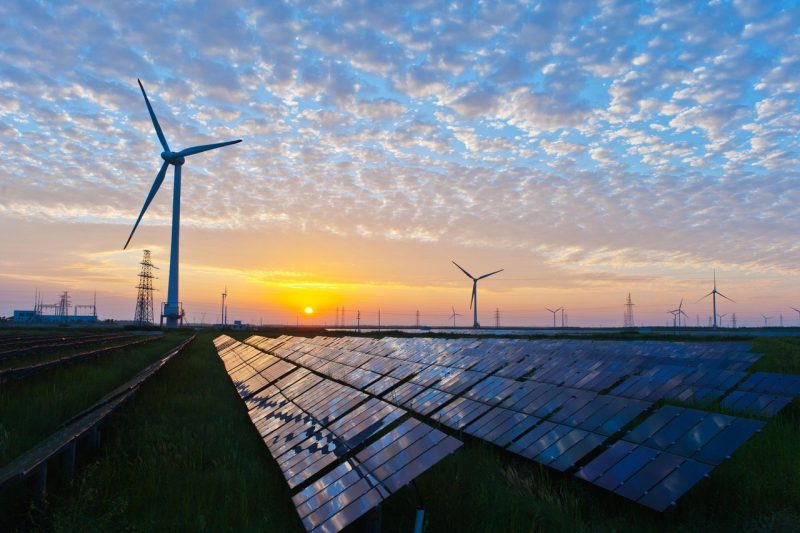According to research by climate think-tank Ember wind and solar now generate one-tenth of global electricity. Ember’s new half-year analysis aggregates national electricity generation for 48 countries making up 83% of global electricity production. It builds on Ember’s annual Global Electricity Review.
According to Ember wind and solar generation rose 14% in the first half of this year (H1-2020) compared to H1-2019, generating almost a tenth (9.8%) of global electricity. In the 48 countries analysed, wind and solar generation rose from 992 terawatt hours in 2019 to 1,129 terawatt hours in H1-2020. That meant wind and solar’s share of global electricity has risen from 8.1% in 2019 to 9.8% in H1-2020. And their share more than doubled from 4.6% in 2015, when the Paris Climate Agreement was signed. Wind and solar generated almost as much CO2-free power as nuclear power plants, which generated 10.5% of global electricity in H1-2020 and whose share remained unchanged from 2019.
EU ahead
Many key countries now generate around a tenth of their electricity from wind and solar: China (10%), the US (12%), India (10%), Japan (10%), Brazil (10%) and Turkey (13%). The EU and UK were substantially higher with 21% and 33% respectively; within the EU, Germany rose to 42%. Russia is the largest country so far to shun wind and solar, with just 0.2% of its electricity from wind and solar.
Coal generation declining
Global coal generation fell 8.3% in the first half of 2020, compared to H1-2019. This breaks a new record, following on from a year-on-year fall of 3% in 2019, which at the time was the biggest fall since at least 1990. The fall in H1-2020 is because electricity demand fell globally by 3.0% in H1-2020 due to COVID-19, as well as due to rising wind and solar. Although 70% of coal’s fall in H1-2020 can be attributed to lower electricity demand due to COVID-19, 30% can be attributed to increased wind and solar generation. The US and the EU are racing to reduce coal, with falls of 31% and 32% respectively. China’s coal fell only 2%, meaning its share of global coal generation rose to 54% so far this year, up from 50% in 2019 and 44% in 2015.
Wind and solar have captured a five percentage points market share from coal since 2015. Coal’s share fell from 37.9% in 2015 to 33.0% in the first half of 2020, as wind and solar grew from 4.6% to 9.8%. India’s change was even more dramatic: wind and solar’s share rose from 3% of total generation in 2015 to 10% in the first half of 2020; at the same time, coal’s share fell from 77% to 68%. For the first time, the world’s coal fleet ran at less than half of its capacity this year.
Too slow
The global electricity transition is off-track for 1.5 degrees. Coal needs to fall by 13% every year this decade, and even in the face of a global pandemic coal generation has only reduced 8% in the first half of 2020. The IPCC’s 1.5 degree scenarios show coal needs to fall to just 6% of global generation by 2030, from 33% in H1-2020. The IPCC shows in all scenarios most of coal’s replacement is with wind and solar.
Find the analysis of Ember here




